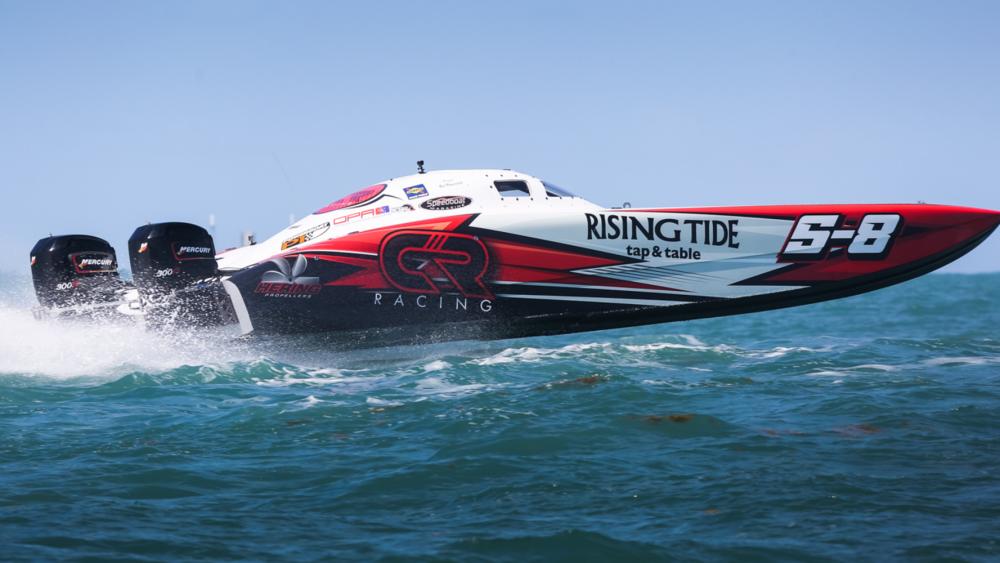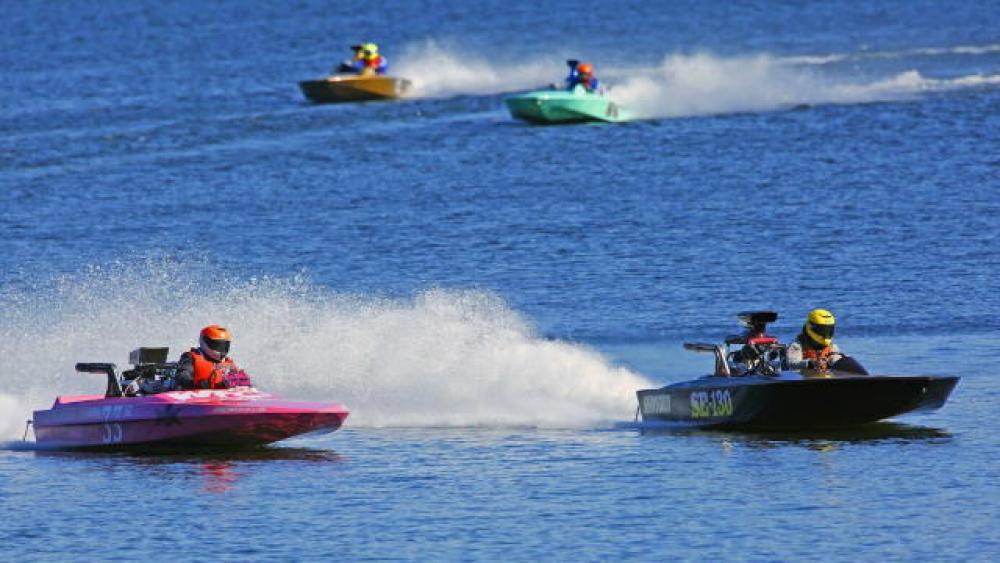Offshore Menu
Super Stock

Super Stock offshore racing is a popular and competitive class within the sport of offshore powerboat racing. Unlike the more extreme and high-cost classes such as the Pro Class 1, Super Stock boats are designed to be more accessible to a wider range of teams while still delivering fast speeds and thrilling competition. Here's an overview of Super Stock offshore racing:
1. Boat Design & Construction
Size & Weight: Super Stock offshore racing boats typically range from 28 to 40 feet (8.5 to 12 meters) in length. These boats are relatively smaller and lighter than the larger Pro Class 1 boats, which makes them more nimble and easier to handle.
Hull Design: Super Stock boats use deep-V or modified-V hull designs, which are optimized for speed and stability in rough waters. The hulls are built to cut through waves efficiently, allowing for better control and smoother rides in choppy seas.
Construction Materials: These boats are generally built with materials like fiberglass, carbon fiber, or a combination of both. Fiberglass is commonly used for its durability, while carbon fiber can be incorporated to reduce weight and improve overall performance.
2. Engines & Power
Engine Specifications: Super Stock boats typically run on twin engines, often V8 or V10 engines. The engine power in Super Stock class boats is generally capped to ensure a level playing field. These engines usually produce between 500 and 800 horsepower per engine.
Engine Type: The most common engines used in this class are naturally aspirated (non-turbocharged) gasoline engines, though some teams might use supercharged engines. These engines are designed to offer a balance between high performance and reliability for longer races.
3. Performance
Speed: Super Stock boats typically reach top speeds of around 80 to 100 mph (128 to 160 km/h), which is still incredibly fast but not as extreme as the top speeds achieved by the Pro Class 1 boats.
Handling & Stability: Due to their design, Super Stock boats are stable in rough waters and can navigate through challenging offshore conditions effectively. However, their speed and handling characteristics are a bit more conservative compared to the higher-end racing classes, making them more accessible to a wider range of racers.
4. Racing Format
Race Type: Super Stock offshore races are typically held in open-water conditions, much like other offshore racing classes. These races often feature courses that involve multiple turns, straights, and sometimes offshore loops.
Class Structure: The Super Stock class is often divided into categories based on the engine power and boat modifications, allowing for different tiers of competition. Some events might include time trials, while others feature point-based racing over multiple events in a season.
5. Crew & Teams
Crew Size: Super Stock boats generally have a crew of two: a driver (often responsible for steering and navigation) and a throttleman (who operates the throttle and manages engine performance).
Team Requirements: Racing in the Super Stock class can be less expensive than higher-tier classes like Pro Class 1, but still requires a dedicated team for boat preparation, maintenance, and logistics. Teams often have mechanics, engineers, and other support staff to keep the boats in top condition.
6. Safety Features
Safety Regulations: The safety of the crews is paramount in Super Stock offshore racing. Boats are equipped with reinforced cockpits, racing harnesses, and fire suppression systems to protect against accidents. Crews are also required to wear specialized racing suits, helmets, and life vests.
Rescue & Support: Like other offshore racing formats, races often have safety boats and helicopters on standby in case of emergencies. Rescue operations are part of the infrastructure surrounding the races.
7. Technology & Navigation
Navigation Equipment: Super Stock boats are typically equipped with GPS, radar, and other navigation tools to help teams follow the race course and make real-time adjustments.
Telemetry: Many teams utilize telemetry to monitor their boat’s performance throughout the race. This data allows crews to adjust engine settings and other variables on the fly to optimize performance during different stages of the race.
8. Racing Events & Global Series
Events: Super Stock offshore racing takes place in a variety of prestigious international events, including races in locations like the United States, Europe, and the Middle East. One notable series is the UIM Offshore Class 1 World Championship, where the Super Stock class competes alongside other boat categories.
Season Structure: Races are typically spread over several weekends, with teams collecting points across the season based on their finishing positions. The team with the most points at the end of the season is crowned the championship winner.
9. Affordability & Accessibility
Cost: One of the main draws of Super Stock racing is that it is more affordable than higher-end racing classes like Pro Class 1. While still expensive to run, it is more accessible for smaller teams and private boat owners. This allows for a wider range of participants and a greater sense of competition at all levels.
Entry-Level Competitive Racing: Super Stock serves as a good entry point for those looking to get involved in offshore racing without the huge financial commitment required for higher classes. Many teams get started in Super Stock before advancing to more competitive categories.
In summary, Super Stock offshore racing offers a thrilling and more accessible alternative to the elite levels of offshore powerboat racing. With its combination of speed, skill, and relatively lower costs, it has become a popular entry point for many competitive powerboat racers. The class is known for its exciting races, strong community, and potential for growth in the sport of offshore racing.
Super Stock Specifications
| Minimum Length: | 28 feet |
| Minimum Weight: | |
| Engine: | 300xs Mercury Motor |
| Fuel: | Petroleum Based Fuels Only |
| Approximate Speed: |
Super Stock High Point Winners
| Year | Driver/Owner | Races | Points |
|---|
Super Stock National Champions
| Year | Driver/Owner |
|---|
Super Stock Records
| Record | Site | Driver/Owner | Speed |
|---|---|---|---|
| Kilo WORLD | Apr 28, 2012 Biloxi, MS | Kyler Talbot Kyler Talbot | 105.762 |


